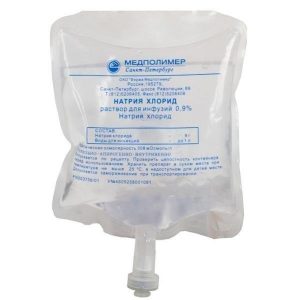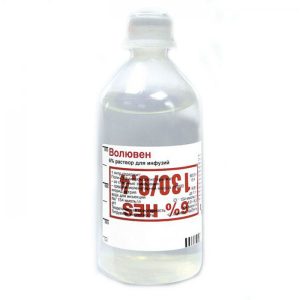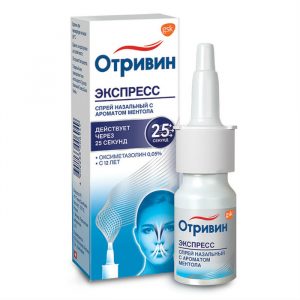Description
Release Form
coated tablets
Packing
21 pcs.
Pharmacological action of
Pharmacodynamics of
Rigevidone is an oral monophasic combined estrogen-progestogen contraceptive.
When administered, it inhibits the pituitary secretion of gonadotropic hormones.
The contraceptive effect is associated with several mechanisms. As a progestin component (progestin) it contains a derivative of 19-nortestosterone – levonorgestrel, which exceeds progesterone in the activity of the corpus luteum hormone (and the synthetic analogue of the latter is pregnin), acts at the receptor level without preliminary metabolic transformations.
The estrogen component is ethinyl estradiol. Under the influence of levonorgestrel, there is a blockade in the release of releasing hormones (LH and FSH) of the hypothalamus, inhibition of pituitary secretion of gonadotropic hormones, which leads to inhibition of maturation and the release of an egg ready for fertilization (ovulation). The contraceptive effect is enhanced by ethinyl estradiol.
Maintains a high viscosity of cervical mucus (makes it difficult for sperm to enter the uterine cavity). Along with the contraceptive effect, when taken regularly, it normalizes the menstrual cycle and helps to prevent the development of a number of gynecological diseases, including tumor nature.
Pharmacokinetics
Levonorgestrel is rapidly absorbed (in less than 4 hours). Levonorgestrel has no effect of the first passage through the liver. With the combined use of levonorgestrel with ethinyl estradiol, there is a relationship between the dose and the maximum plasma concentration. TCmax (time to reach maximum concentration) of levonorgestrel is 2 hours, T1 / 2 (elimination half-life) is 8-30 hours. (average 16 hours). Most levonorgestrel binds in the blood to albumin and SHBG (sex hormone-binding globulin).
Ethinyl estradiol is rapidly and almost completely absorbed from the intestines. Ethinyl estradiol has the primary effect of passing through the liver, TCmax is 1.5 hours, the half-life is about 26 hours.
When ingested, ethinyl estradiol is excreted from the blood plasma within 12 hours. The elimination half-life is 5.8 hours.
Ethinyl estradiol metabolism occurs in the liver and intestines.
Ethinyl estradiol metabolites – water-soluble products of sulfate or glucuronide conjugation, enter the intestine with bile, where they undergo disintegration with the help of intestinal bacteria.
Both components (levonorgestrel and ethinyl estradiol) are excreted in breast milk. Active substances are metabolized in the liver, T1 / 2 is 2-7 hours.
excretion of levonorgestrel is carried out by the kidneys (60%) and through the intestines (40%) of ethinyl estradiol by the kidneys (40%) and through the intestines (60%).
Indications
Oral contraception, functional disorders of the menstrual cycle (including dysmenorrhea without an organic cause, dysfunctional metrorrhagia, premenstrual syndrome).
Contraindications
– Severe liver disease (including congenital hyperbilirubinemia – Gilbert, Dubin-Johnson and Rotor syndromes).
– Cholecystitis.
– The presence or indication of a history of severe cardiovascular and cerebrovascular diseases.
– Thromboembolism and predisposition to them.
– Malignant tumors (primarily breast or endometrial cancer).
– Tumors of the liver.
– Familial forms of hyperlipidemia.
– Severe forms of hypertension.
– Endocrine diseases (including severe forms of diabetes mellitus).
– Sickle cell disease.
– Chronic hemolytic anemia.
– Vaginal bleeding of unknown etiology.
– Bubble skid.
– Migraine.
– Otosclerosis.
– Idiopathic jaundice of pregnant women in history.
– Severe skin itching of pregnant women.
– Herpes of pregnant women.
– Age over 40 years.
– Pregnancy.
– Lactation (breastfeeding).
– Hypersensitivity to the drug.
Use caution with the drug in:
– Diseases of the liver and gall bladder.
– Epilepsy.
– Depression.
– ulcerative colitis.
– Uterine fibroids.
– Mastopathy.
– Tuberculosis.
– Kidney Disease.
– For diabetes.
– Diseases of the cardiovascular system.
– Arterial Hypertension.
– Impaired renal function.
– Varicose veins.
– Phlebite.
– Multiple sclerosis.
– Lesser Chorea.
– In adolescence (without regular ovulatory cycles).
Special instructions
Before starting the use of hormonal contraception and every 6 months thereafter, a general medical and gynecological examination is recommended, including a cytological analysis of a smear from the cervix uteri, assessment of the state of the mammary glands, determination of blood glucose, cholesterol and other indicators of liver function, blood pressure control , Analysis of urine).
Prescribing Rigevidon to women with thromboembolic diseases at a young age and an increase in blood coagulation in a family history is not recommended.
The use of oral contraception is allowed no earlier than 6 months after the transferred viral hepatitis, provided that the liver functions are normalized.
When there are sharp pains in the upper abdomen, hepatomegaly and signs of intra-abdominal bleeding, a liver tumor may be suspected. If necessary, the drug should be discontinued.
In case of impaired liver function while taking Rigevidon, a physician consultation is necessary.
When acyclic (intermenstrual) bleeding occurs, taking Rigevidon should be continued, because in most cases, these bleeding stops spontaneously. If acyclic (intermenstrual) bleeding does not disappear or recur, a medical examination should be performed to exclude the organic pathology of the reproductive system.
In case of vomiting or diarrhea, the drug should be continued using another, non-hormonal method of contraception.
Smoking women who take hormonal contraceptives, there is an increased risk of developing cardiovascular diseases with serious consequences (myocardial infarction, stroke). The risk increases with age and depending on the number of cigarettes smoked (especially in women over 35).
Acceptance of the drug should be discontinued in the following cases:
– When a migraine-like headache first appears or intensifies.
– The appearance of an unusually severe headache.
– When early signs of phlebitis or phlebothrombosis (unusual pain or bloating of veins in the legs) appear.
– If jaundice or hepatitis occurs without jaundice.
– For cerebrovascular disorders.
– When there are stitching pains of an unclear etiology when breathing or coughing, pain and a feeling of tightness in the chest.
– In acute deterioration in visual acuity.
– If you suspect a thrombosis or heart attack.
– With a sharp increase in blood pressure.
– When a generalized itching occurs.
– With an increase in epileptic seizures.
– 3 months before the planned pregnancy.
– Approximately 6 weeks before the planned surgical intervention.
– With prolonged immobilization.
– With the onset of pregnancy.
– Use for impaired liver function: It is contraindicated for use in severe liver diseases (including congenital hyperbilirubinemia – Gilbert syndrome, Dubin-Johnson syndrome and Rotor liver tumor).
– Use for impaired renal function: Caution is required when prescribing the drug is necessary for patients with impaired renal function.
– Influence on the ability to drive vehicles and control mechanisms: Taking the drug does not affect the ability to drive vehicles and to control other mechanisms, work with which is associated with an increased risk of injury.
Composition
Active ingredients:
ethinyl estradiol: 0.03 mg,
levonorgestrel 0.15 mg
Excipients:
in the core of the tablet:
silicon dioxide colloidal,
magnesium stearate,
talc,
corn starch,
lactose monohydrate
in the shell of the tablet:
sucrose,
talcdrd calcium,
trdp calcium trd, srdlcrp trdp calcium trd,
c trdp calcium trd,
c trdp calcium trd,
trdp calcium,
d
silicon colloidal dioxide,
povidone,
carmellose sodium.
Dosage and administration
Use orally without chewing and drinking with a small amount of liquid.
If during the previous menstrual cycle hormonal contraception was not carried out, Rigevidone begin contraception from the first day of menstruation, taking 1 tablet daily for 21 days, at the same time of day.
This is followed by a 7-day break, during which menstrual bleeding occurs. The next 21-day cycle of taking tablets from a new package containing 21 tablets should be started the day after a 7-day break, that is, on the eighth day, even if the bleeding has not stopped. Thus, the start of taking the drug from each new package falls on the same day of the week.
When switching to taking Rigevidon from another oral contraceptive, a similar scheme is used. The drug is taken as long as there is still a need for contraception.
After an abortion, taking the drug is recommended to start on the day of the abortion or the day after surgery.
After childbirth, the drug can only be prescribed to women who are not breastfeeding, contraception should be started no earlier than the first day of menstruation. During lactation, the use of the drug is contraindicated.
Missed Pills A missed tablet should be taken within the next 12 hours. If 36 hours have passed since the last pill was taken, contraception is unreliable. In order to avoid intermenstrual bleeding, the drug should be continued from the packaging that has already been started, with the exception of the missed tablet (s). In cases of skipping pills, it is recommended to additionally use another, non-hormonal method of contraception (e.g., barrier).
For therapeutic purposes, the dose of Rigevidone and the dosage regimen are selected individually by the doctor in each case.
Side effects
The drug is usually well tolerated.
Possible transient side effects that spontaneously pass: nausea, vomiting, headache, breast engorgement, weight change and libido, mood changes, acyclic spotting, in some cases, eyelid edema, conjunctivitis, visual impairment, discomfort when wearing contact lenses (these phenomena are temporary and disappear after cancellation without the appointment of any therapy).
With prolonged use, chloasma, hearing loss, generalized itching, jaundice, cramps of the calf muscles, and an increase in the frequency of epileptic seizures can very rarely occur.
Hypertriglyceridemia, hyperglycemia, decreased glucose tolerance, increased blood pressure (BP), thrombosis and venous thromboembolism, jaundice, skin rashes, changes in the nature of vaginal secretion, vaginal candidiasis, increased fatigue, and diarrhea are rare.
Drug interactions
Barbiturates, some antiepileptic drugs (carbamazepine, phenytoin), sulfonamides, pyrazolone derivatives can enhance the metabolism of the steroid hormones that make up the drug.
A decrease in contraceptive effectiveness can also be observed when given concomitantly with certain antimicrobials (including ampicillin, rifampicin, chloramphenicol, neomycin, polymyxin B, sulfonamides, tetracyclines), which is associated with a change in intestinal microflora.
When used concurrently with anticoagulants, derivatives of coumarin or indandion may require additional determination of the prothrombin index and a change in the dose of the anticoagulant.
When tricyclic antidepressants, maprotiline, beta-blockers are used, their bioavailability and toxicity may increase.
When using oral hypoglycemic drugs and insulin, it may be necessary to change their dose.
When combined with bromocriptine, its effectiveness decreases.
When combined with drugs with a potential hepatotoxic effect, for example, with the drug dantrolene, an increase in hepatotoxicity is observed, especially in women over 35 years of age.
Rigevidone should be used with caution in combination with the medicines listed above.
Overdose
Cases of toxic effects due to overdose are unknown.
Storage Conditions
The product should be stored at 15 ° C to 30 ° C.
Shelf life
5 years.
Deystvuyushtee substance
tinilÑstradiol, Levonorgestrel
prescription drugstore
vacations recipe
dosage form
tablets
Prescribing
Prescribing
Adults as prescribed by a doctor, For women of childbearing age
Gedeon Richter Vengriya




